Georgetown's Stabroek Market is Guyana's biggest food market, but it's more than a place to shop for an incredible variety of produce and other food. It's more than a place to shop for the many other kinds of wares, from jewelry to clothes to hardware to pharmacy and beyond. Stabroek is also a center of city life, with roots going back well over 200 years.
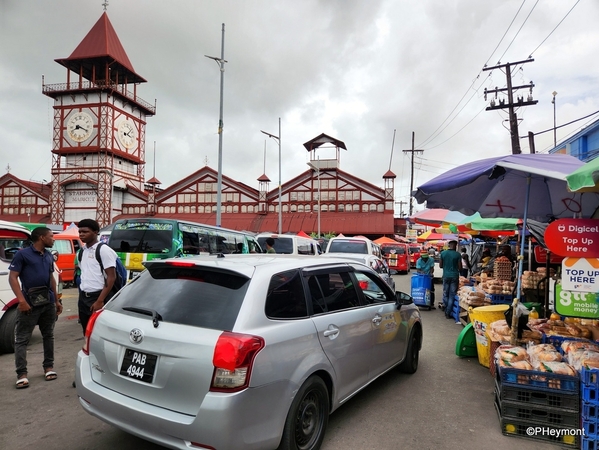
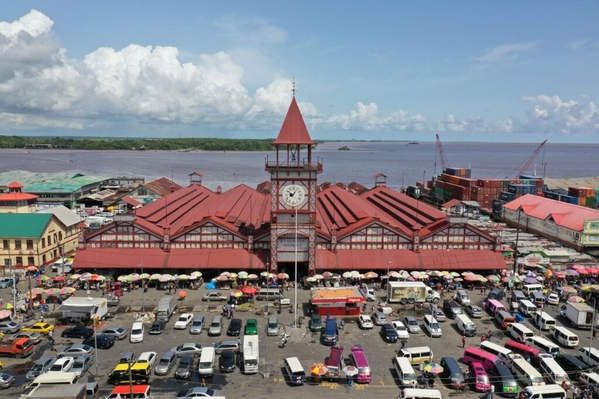
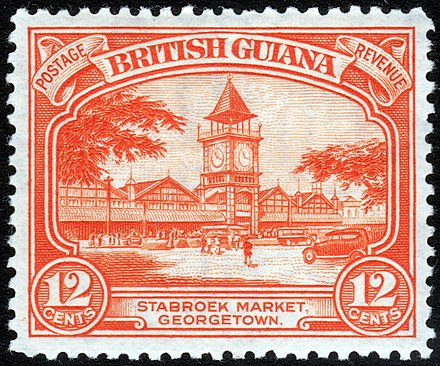 Under its iconic clock tower and an iron-and-steel shed that covers 80,000 square feet (about one-and-a-half American football fields) are hundreds of individual stands ranging from small carts to sizable showrooms, with more spilling out into the surrounding streets. On a busy day, and most are, it can be hard to move through some parts, and easy to lose your way.
Under its iconic clock tower and an iron-and-steel shed that covers 80,000 square feet (about one-and-a-half American football fields) are hundreds of individual stands ranging from small carts to sizable showrooms, with more spilling out into the surrounding streets. On a busy day, and most are, it can be hard to move through some parts, and easy to lose your way.
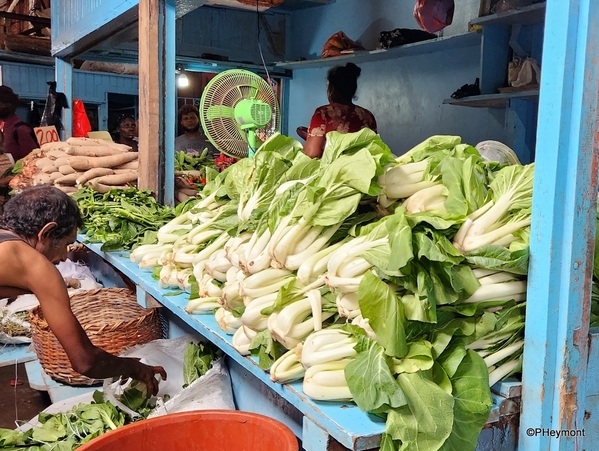

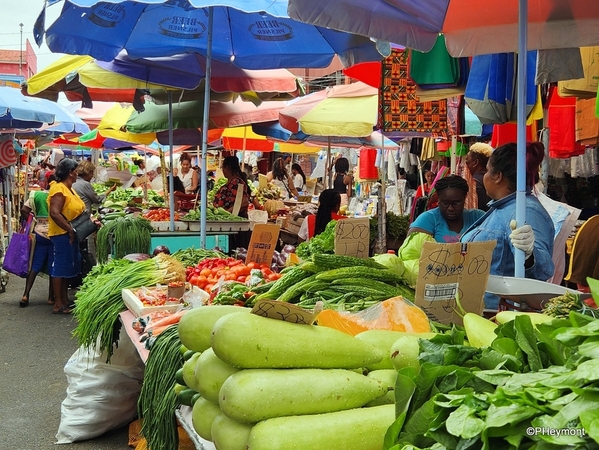 Most of the beautiful produce is Guyana-grown; much of it was new to me, but not to my Guyana-born friend who led us through the market, chatting with vendors, sharing memories and making the visit far different from my visits to other markets over the years. I also learned that numbers of the tropical fruits have different names in different parts of the Caribbean.
Most of the beautiful produce is Guyana-grown; much of it was new to me, but not to my Guyana-born friend who led us through the market, chatting with vendors, sharing memories and making the visit far different from my visits to other markets over the years. I also learned that numbers of the tropical fruits have different names in different parts of the Caribbean.
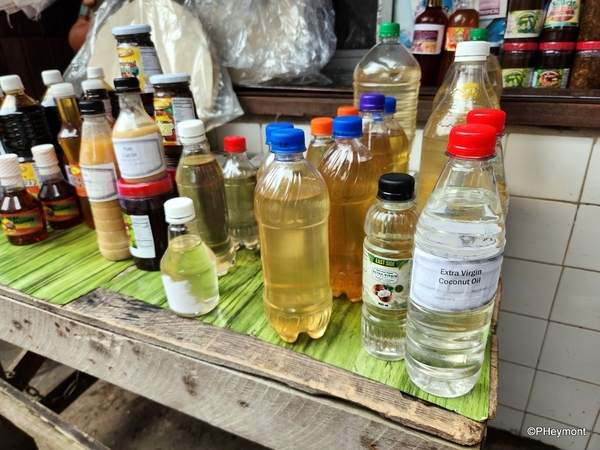
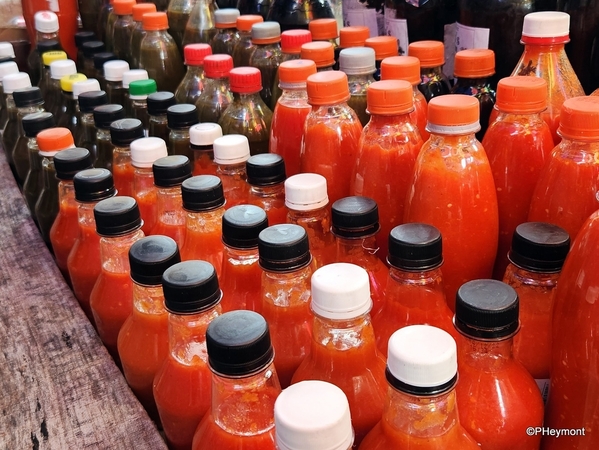 Locally-produced oils and sauces abound, often staying green by re-using plastic containers
Locally-produced oils and sauces abound, often staying green by re-using plastic containers
Stabroek is not the city's only market, but it's the one people mean when they say "the big market," and its reach extends far beyond the city—the incredibly crowded plaza in front, filled with stands, cars, pedestrians and more, is also the transfer point where mini-buses arrive from other towns and other parts of the city.
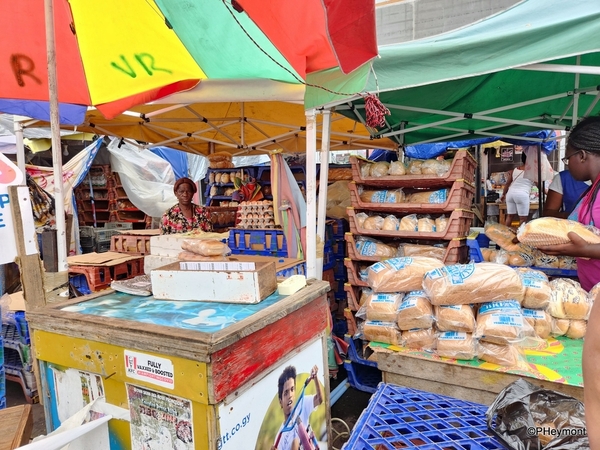
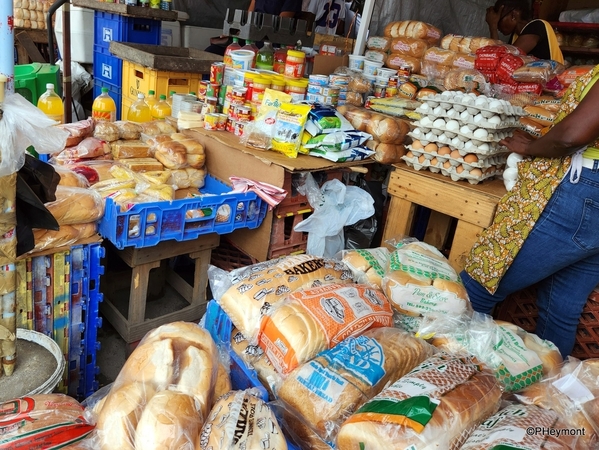
Behind Stabroek is the market's other transit hub, the 'Stelling,' where small ferries come and go, bound for towns and villages across the Demerara River and downstream. Stelling is an old Dutch word for port or harbor, a reminder that before British rule, Guyana was a Dutch colony and Georgetown's name was Stabroek.


The river's rich brown color is because of the strong currents carrying silt from the rich interior rainforests of Guyana. Below, birdcages at the Stelling.

There's been a market on the site, at the edge of the river, for longer than records show; when it was first mentioned in 1792, it had been in existence for a while, starting as a place where enslaved Africans were allowed to sell produce on Sundays. It became an official market in 1842 after slavery was abolished and after Dutch rule was replaced by British.

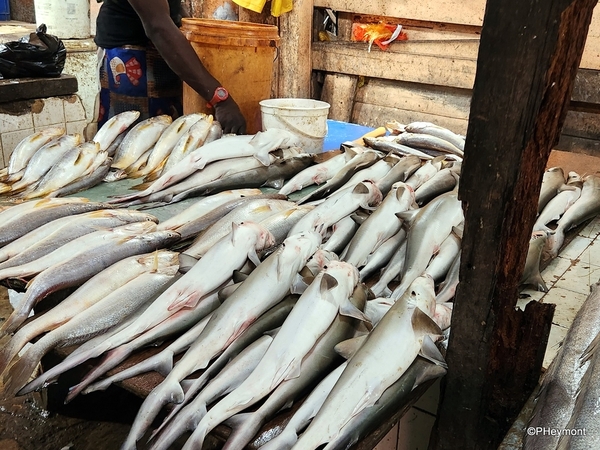
Fresh fish and seafood occupy a sizable part of the market, along with stands cutting and selling meats.
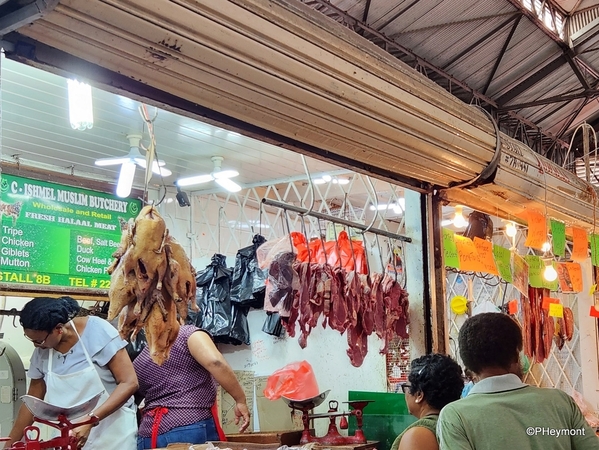
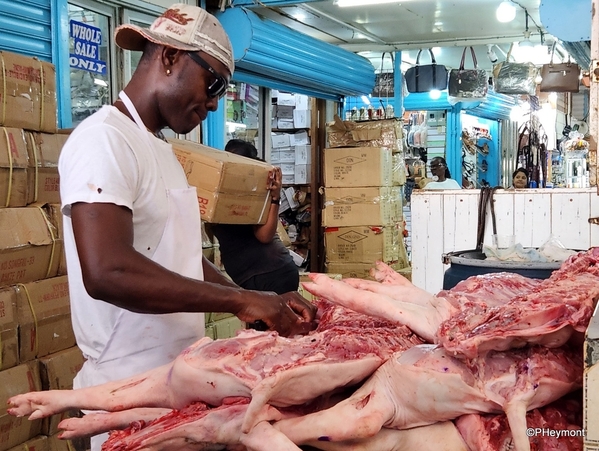
Stabroek is also a place for shoes and clothing, with large displays, including garments hung in the aisles above the stands.
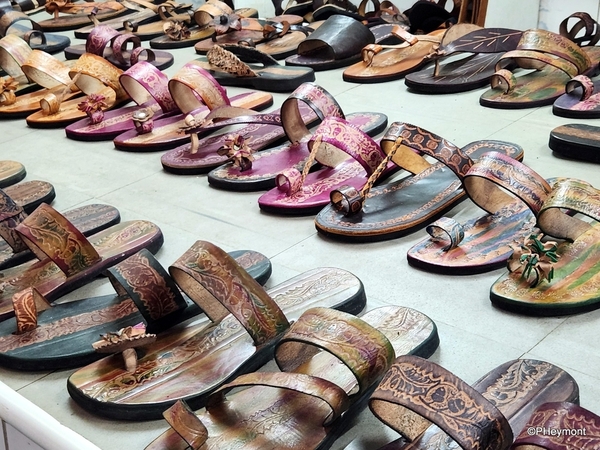
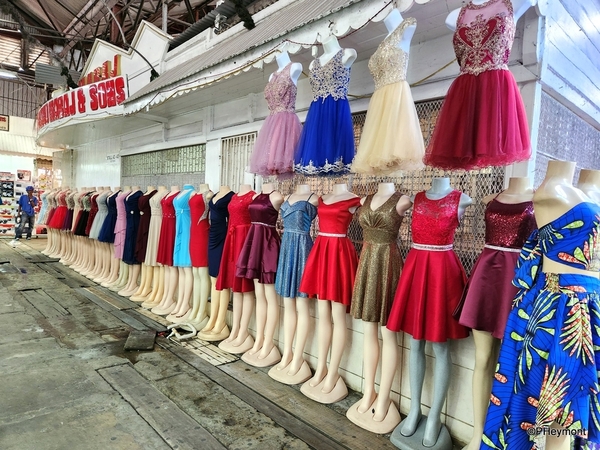
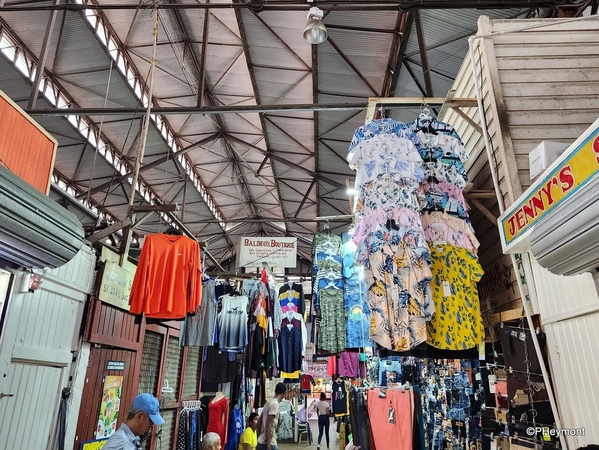
Stabroek has quite a few shops selling gold and silver jewelry, and there are several pharmacies. And if shopping makes you hungry... there are snacks and meals of all sorts on offer.
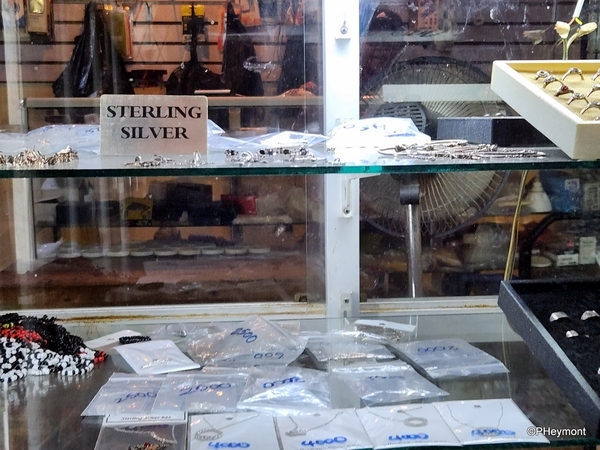
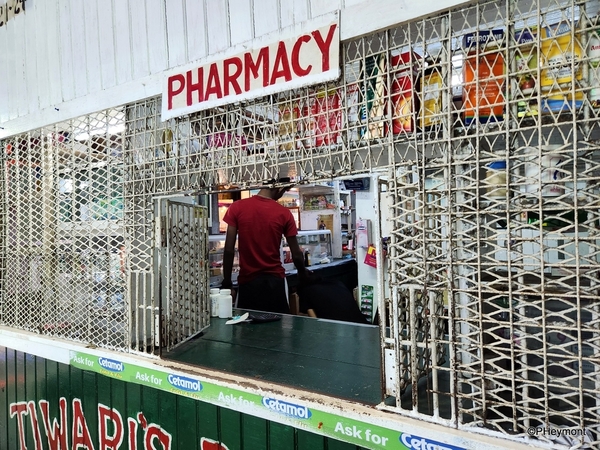
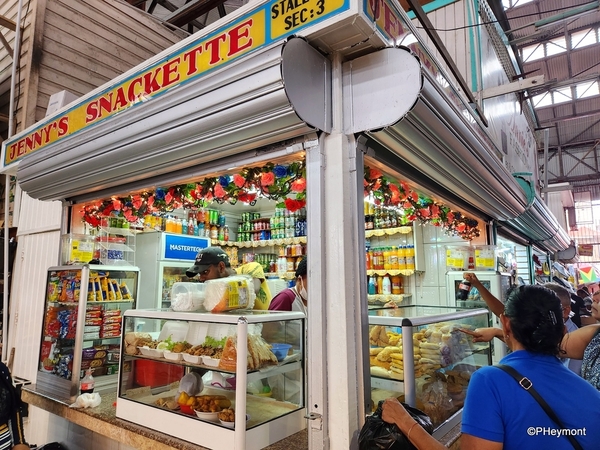
The first market hall, built of native woods, was created just after 1842, but by 1870 it had already become too small, and planning started for the present market.
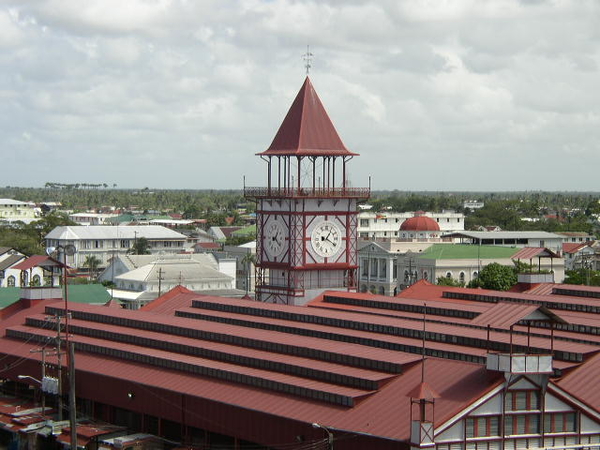
Surprisingly, the market was 'built' in the U.S. by Edge Moor Iron Works in Delaware. The development of iron- and steel-frame techniques at the time made it possible to prepare all the parts for large buildings in one place and then erect them in another—an early use of pre-fab building.
The whole process took just over fifteen months, and the new building opened with great ceremony on November 1, 1880. Its four-faced clock, with a bell ringing on the half-hour, became one of the city's most recognizable landmarks. Stabroek Market may be the oldest building still in use in the city.
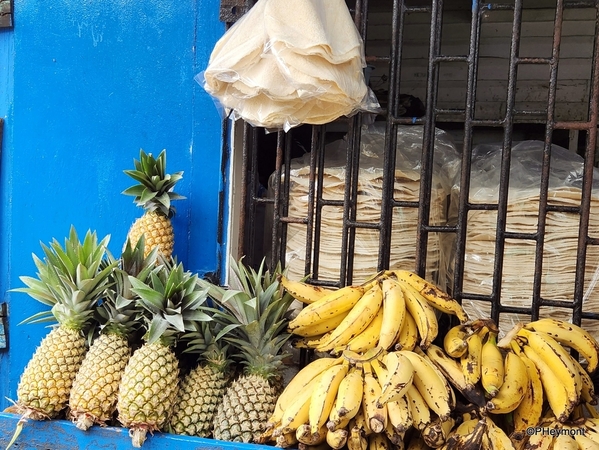
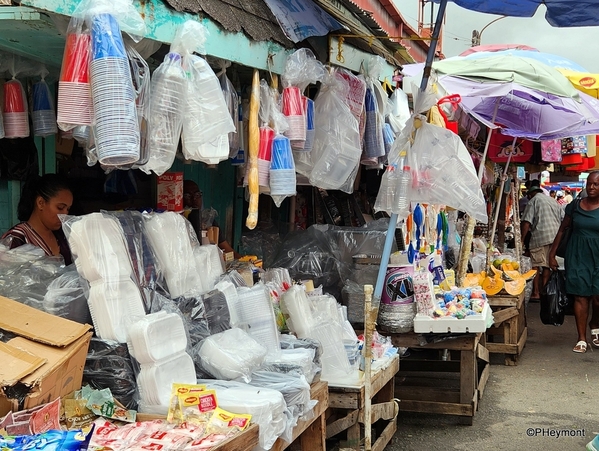
Sadly, the bell no longer rings, but the clock is scheduled for repair and perhaps the bell will follow. With or without them, Stabroek is an amazing place to visit, and very much 'the big market,' and an amazing place to visit and shop.



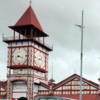



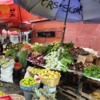
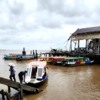

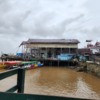
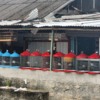




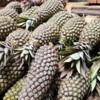


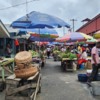







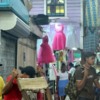
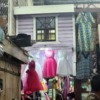







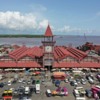
Comments (0)